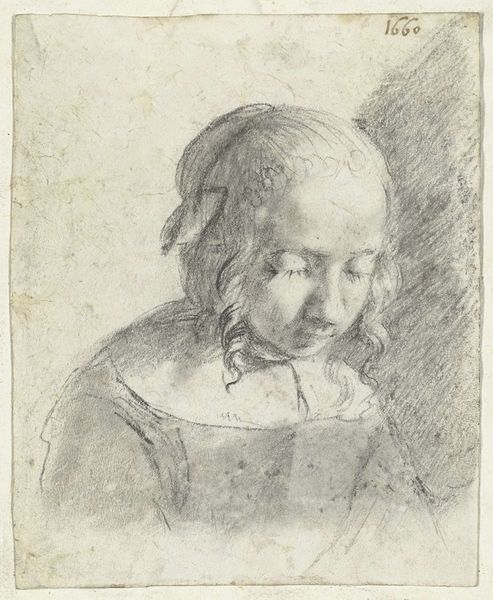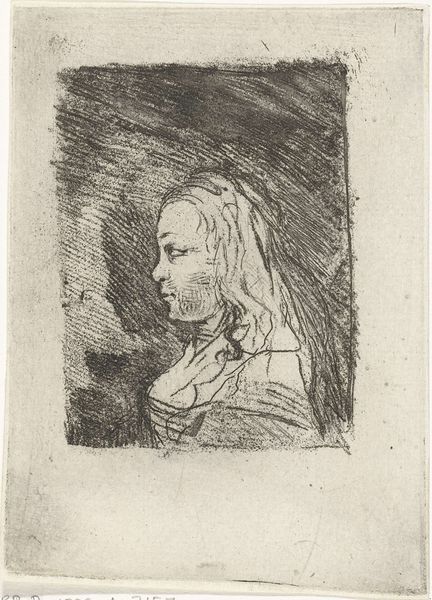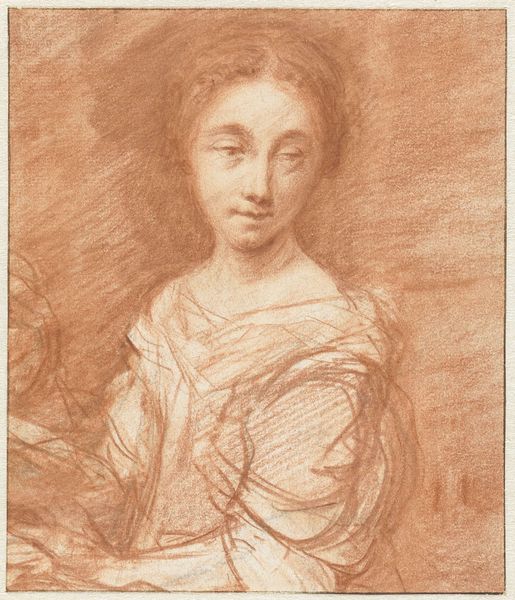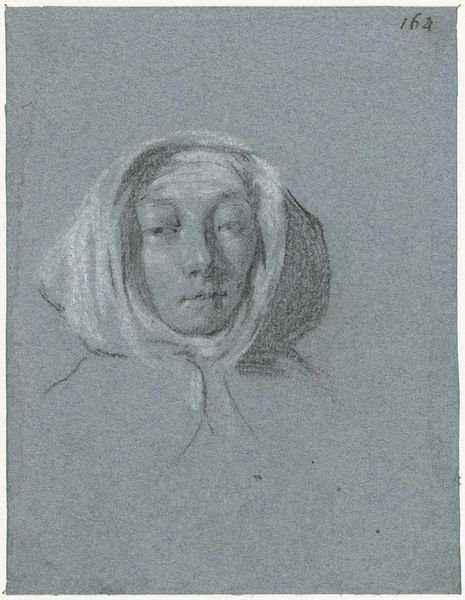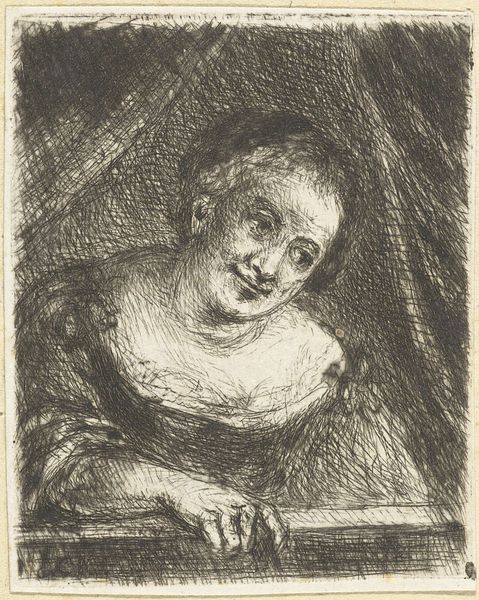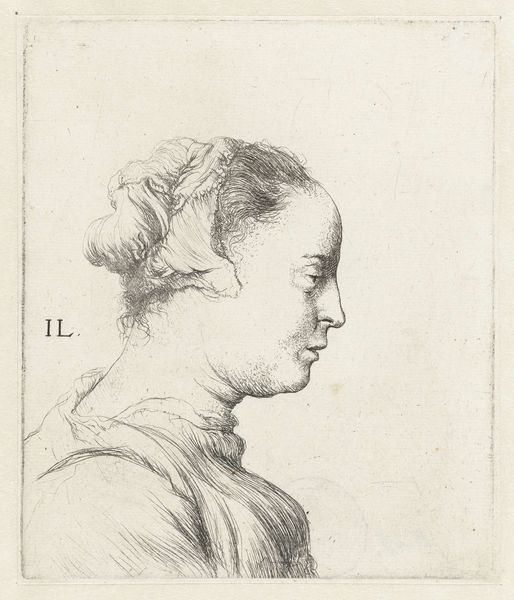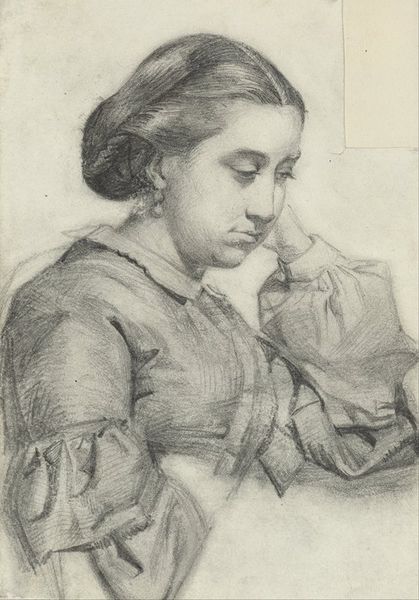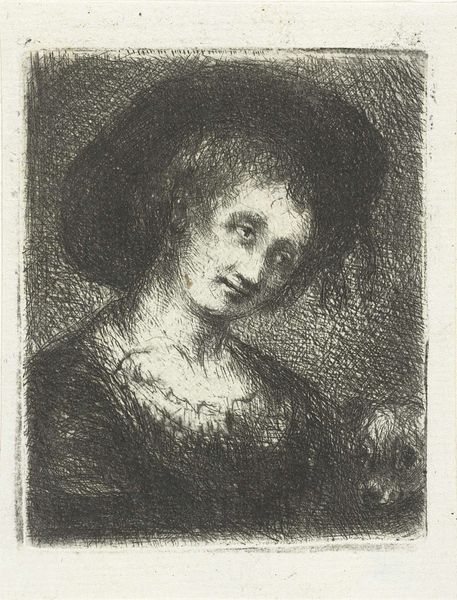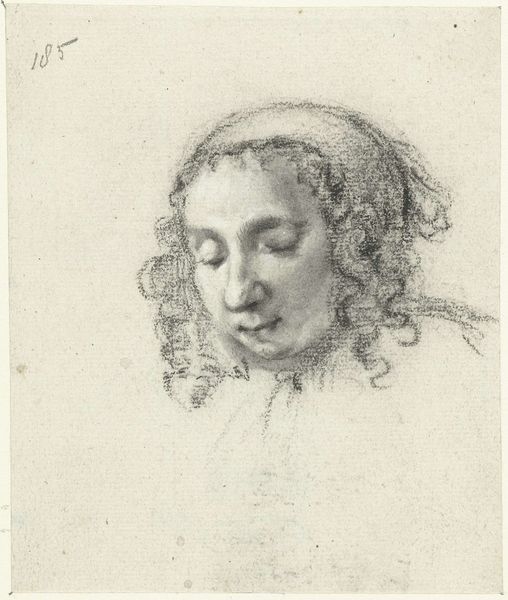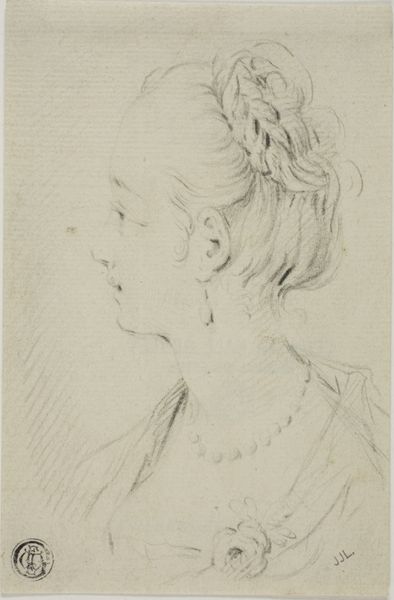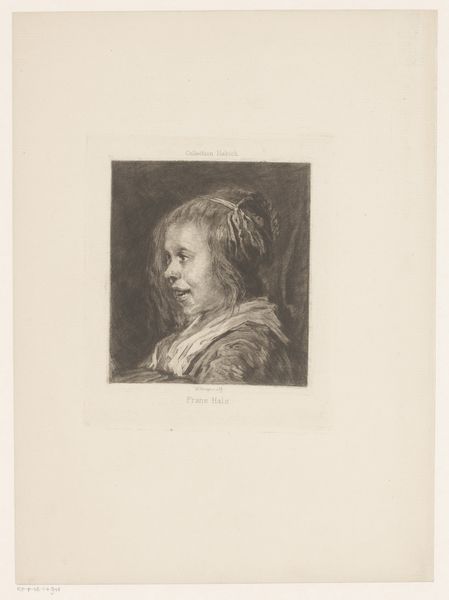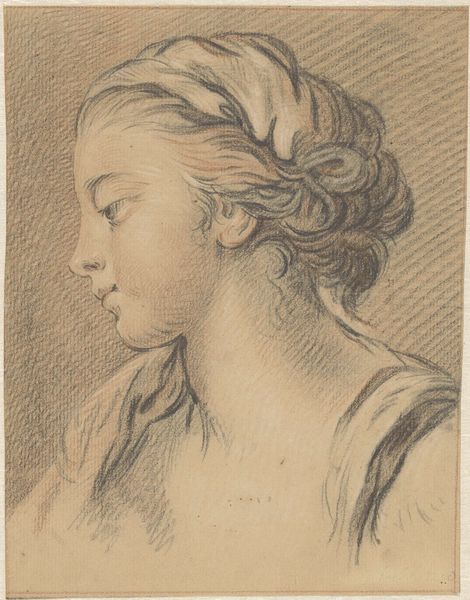
Dimensions: height 88 mm, width 74 mm
Copyright: Rijks Museum: Open Domain
Editor: So, this is "Buste van een vrouw, met hoofddoek," or "Bust of a Woman with Headscarf," an engraving by Margaretha Elisabeth Philips-Konsé from 1766. The fine lines create a delicate and almost dreamlike quality, I think. What strikes you most about this image? Curator: The way the artist uses the headscarf is particularly fascinating. It's more than just an article of clothing; it shrouds the figure in a sense of mystery and perhaps even melancholy. Does it suggest to you anything about the social or cultural status of women at the time, especially within a Baroque framework? Editor: I hadn’t considered that angle! The downcast eyes contribute to the feeling of melancholy, but also… I wonder about modesty? Curator: Precisely. The gaze, averted and internal, coupled with the head covering, becomes a powerful signifier. It resonates with notions of piety and female virtue, ideals that were very much at the forefront of societal expectations. But consider the gaze and headscarf beyond mere modesty. What else might be represented by such a strong emphasis? Editor: Maybe a quiet strength, a hidden life of the mind? The headscarf then is like a boundary. I really like the psychological dimension this adds. Curator: Indeed. Through these symbols, Philips-Konsé is participating in a dialogue about the nature of womanhood and internal life. Think about how often the outward presentation—the headscarf, the posture—encapsulates inner realities or guarded truths. Editor: It's remarkable how much a simple portrait can reveal about cultural values and individual psychology. I'll never look at a headscarf the same way. Curator: And that's the beautiful thing about images—they continue to speak, to provoke, and to connect us to different eras and ways of seeing.
Comments
No comments
Be the first to comment and join the conversation on the ultimate creative platform.
